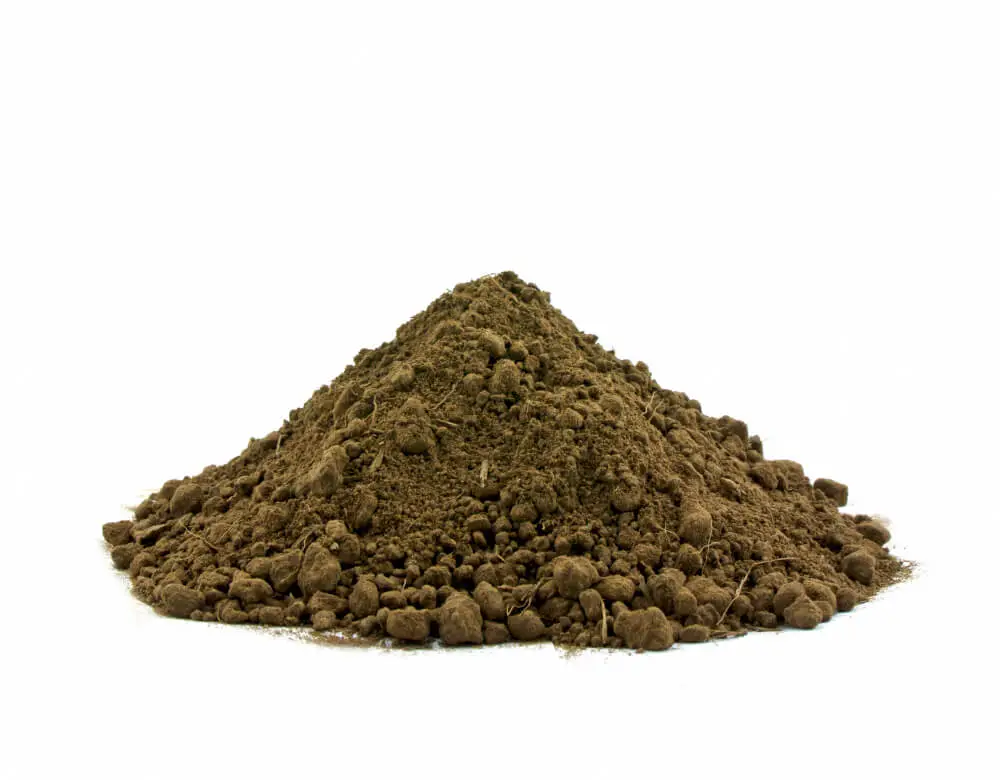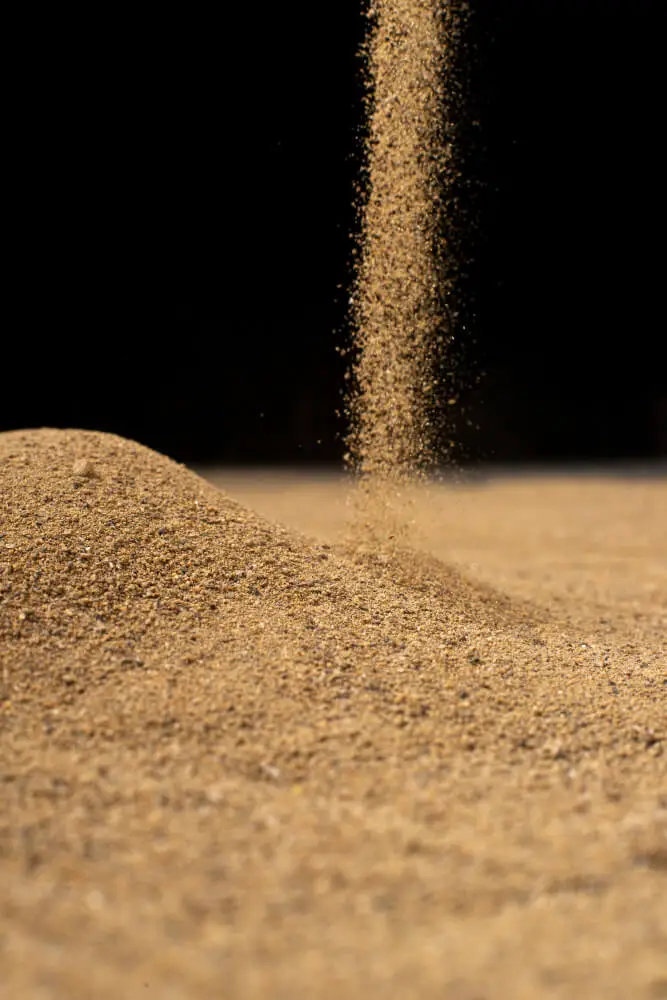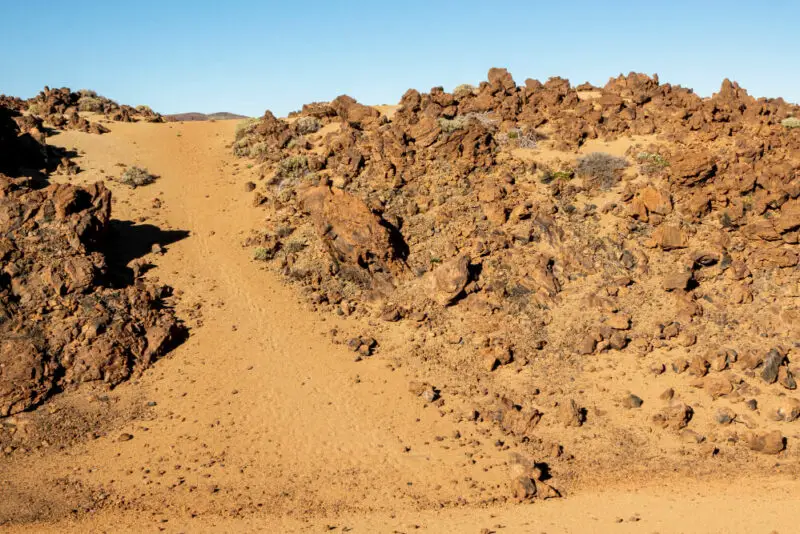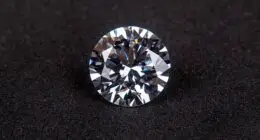Dirt consists of a mixture of organic matter and minerals, while sand is primarily composed of granular particles of rock or mineral fragments.
What is the difference between dirt and sand? When it comes to soil and sand, there are distinct characteristics that set them apart. Understanding these differences is crucial for various purposes, such as agriculture, gardening, and construction. Let’s explore the unique properties and uses of dirt and sand in detail.
Key Takeaways:
- Soil is a complex mixture of organic matter, minerals, gases, liquids, and organisms.
- Sand is made up of small particles of weathered rock.
- Dirt and sand have different compositions, textures, and nutrient contents.
- Dirt is essential for agriculture and gardening, providing nutrients and support for plant growth.
- Sand is commonly used in construction for stability and filtration but is not ideal for plant growth.
Soil Composition and Formation
Soil is a complex mixture of minerals, organic matter, living organisms, gas, and water. The composition of soil is determined by various factors such as the parent material, topography, climate, organisms, and time. Understanding soil composition is crucial in assessing its suitability for different purposes and applications.
Minerals in the soil can be classified into three size classes: clay, silt, and sand, which determine the soil’s texture. Different combinations of these minerals result in various types of soil, each with its unique characteristics. Some common types of soil include sandy soil, clay soil, silt soil, peat soil, chalk soil, and loam soil. Each type of soil has different proportions of clay, silt, and sand particles, leading to distinct textures and properties.
Soil Formation

Soil formation is a continuous process driven by many factors. It starts with rocks breaking down into tiny particles due to weathering. Over time, these particles accumulate organic matter, minerals, and microorganisms, forming soil. The type of rock or sediment underneath, called parent material, shapes the soil’s characteristics. Different parent materials create soils with various properties.
Factors like the landscape, climate, organisms, and time also influence soil formation. Land features like slopes affect water movement and organic matter accumulation. Climate elements such as temperature and rainfall impact soil development. Living organisms like plants and microorganisms contribute to soil’s organic content and nutrient cycling. Soil formation takes centuries or even millennia. Understanding soil composition and formation helps in better land management for agriculture, gardening, and construction.
| Type of Soil | Main Characteristics |
|---|---|
| Sandy soil | Coarse texture, good drainage, low water-holding capacity |
| Clay soil | Fine texture, high water-holding capacity, slow drainage |
| Silt soil | Medium texture, good fertility, moderate drainage |
| Peat soil | High organic matter content, waterlogged, acidic pH |
| Chalk soil | Alkaline pH, good drainage, low fertility |
| Loam soil | Well-balanced texture, good fertility, excellent water-holding capacity |
Uses and Characteristics of Dirt
Dirt, also known as soil, is essential for agriculture and gardening because it provides nutrients and support for plants to grow. There are different types of dirt, like sandy and clay soil, each with its own qualities. Sandy soil lacks nutrients and struggles to hold water, making it less suitable for plant growth. In contrast, clay soil retains water and nutrients well but may drain slowly and take longer to warm up.
Understanding the characteristics of dirt helps gardeners and farmers choose the right soil for their crops. They consider factors like the plants’ nutrient needs and how much moisture they require. In summary, dirt is crucial for growing plants, and selecting the right type of soil depends on the specific needs of the plants being grown.
Characteristics of Dirt:
- Provides nutrients and support for plant growth.
- Sandy soil has low nutrient content and poor water-holding capacity.
- Clay soil retains water and nutrients well but may drain slowly and take longer to warm up in the summer.
Uses and Characteristics of Sand
Sand is a versatile material with a wide range of uses and distinct characteristics. Its unique properties make it indispensable in various industries and applications. Let’s explore the uses and characteristics of sand in more detail.
Uses of Sand

Sand is commonly used in construction due to its excellent drainage properties and stability. It is the primary component in creating strong foundations for buildings, roads, and other structures. Additionally, sand is an essential ingredient in producing various construction materials, such as concrete, mortar, and asphalt.
Aside from construction, sand plays a crucial role in filtration systems. Its ability to trap impurities makes it ideal for filtering water in swimming pools, water treatment plants, and aquariums. Sand is also used as an abrasive agent in industries like metalworking, glass manufacturing, and sandblasting.
Characteristics of Sand
Sand exhibits specific characteristics that make it distinct from other types of soil. Here are some notable characteristics of sand:
- Drainage: Sand has excellent drainage capabilities, allowing water to flow freely through its particles.
- Permeability: Its loose structure grants sand high permeability, facilitating the movement of water and preventing waterlogging.
- Particle Size: Sand consists of granular particles, usually ranging in size from 0.0625 mm to 2 mm.
- Low Nutrient Content: Sand has a low nutrient content, which makes it unsuitable for supporting plant growth without amendment.
- Poor Water-Holding Capacity: Due to its coarse texture, sand has limited water-holding capacity, resulting in rapid drainage.
These characteristics of sand determine its suitability for different applications, while also highlighting its limitations when it comes to cultivating plant life.
| Characteristics of Sand | Uses |
|---|---|
| Excellent drainage properties | Construction, filtration, abrasive agent |
| High permeability | Water filtration, drainage systems |
| Low nutrient content | This characteristic makes sand unsuitable for supporting plant growth without amendment. |
| Poor water-holding capacity | Prevents waterlogging, ideal for construction |
Understanding the uses and characteristics of sand is crucial for harnessing its benefits effectively in construction, filtration, and other applications. While sand may not be ideal for plant growth, its unique properties make it an indispensable resource in various industries.
Differentiating Dirt from Sand
While both dirt and sand are types of soil, there are distinct ways to differentiate between them. Understanding these differences can help individuals make informed decisions about soil management, gardening, and plant growth.
Dirt: Rich in Organic Matter and Nutrients
Dirt, also known as soil, typically contains a higher amount of organic matter and nutrients compared to sand. It is composed of minerals, organic materials, microorganisms, water, and air. This organic matter and nutrient content make dirt a suitable medium for supporting plant growth and providing necessary nutrients.
Sand: Primarily Inorganic Matter with Low Nutrient Content
On the other hand, sand is composed mostly of inorganic matter, such as small particles of weathered rock. It has a low nutrient content and poor water-holding capacity due to its coarse texture. Sand is often used in construction, filtration systems, and as an abrasive agent due to its drainage properties. However, it is not suitable for growing plants without appropriate amendments.
In terms of appearance, dirt tends to have a darker color compared to the lighter color of sand. The organic matter in dirt contributes to its darker hue, while the lack of organic matter in sand gives it a lighter and often whitish or yellowish color.
Soil and Sand Composition and Texture
Understanding the composition and texture of soil and sand is essential in recognizing their unique characteristics and uses. Soil is a complex mixture that consists of minerals, organic matter, living organisms, gas, and water. On the other hand, sand is composed of small particles of weathered rock.
The composition of soil directly influences its texture, which is determined by the percentages of clay, silt, and sand particles. In contrast, sand texture depends on the size and shape of its particles. Let’s take a closer look at the composition and texture of soil and sand:
Soil Composition
The composition of soil is a result of various factors, including its parent material, topography, climate, organisms, and time. It is made up of:
- Minerals: Minerals in the soil include clay, silt, and sand particles. These particles contribute to the soil’s texture.
- Organic Matter: Organic matter in the soil is derived from decaying plants, animals, and microorganisms. It adds nutrients and improves soil structure.
- Living Organisms: Soil is home to an array of organisms, such as earthworms, bacteria, fungi, and insects. These organisms play a crucial role in soil fertility and nutrient cycling.
- Gas and Water: Soil contains air pockets filled with gases necessary for the survival of plant roots and soil organisms. It also holds water, which is essential for plant growth and the movement of nutrients.
Sand Composition
Sand is primarily composed of small particles resulting from the weathering of rocks. It consists of:
- Silica: Silica is the most abundant component of sand, giving it its characteristic appearance and properties.
- Minerals: Sand can contain minerals such as quartz, feldspar, and mica, which contribute to its composition.
- Other Elements: Depending on the source area, sand can also contain traces of other elements and minerals.
Soil Texture
Soil texture refers to the proportions of clay, silt, and sand particles within the soil. It plays a crucial role in determining the soil’s characteristics, such as drainage, water-holding capacity, and nutrient availability. The following table illustrates the different soil textures and their properties:
| Soil Texture | Description | Properties |
|---|---|---|
| Clay | Fine-textured soil with high water-holding capacity | Poor drainage, prone to compaction |
| Silt | Medium-textured soil with moderate water-holding capacity | Good drainage, easily compacted |
| Sand | Coarse-textured soil with low water-holding capacity | Good drainage, low nutrient retention |
| Loam | A balanced mixture of sand, silt, and clay | Optimal drainage, water-holding capacity, and nutrient retention |
Sand Texture
The texture of sand is determined by the size and shape of its particles. The shape of sand particles can vary from angular to rounded, influencing its characteristics. The following table showcases the different types of sand textures:
| Sand Texture | Description |
|---|---|
| Coarse Sand | Consists of larger, rougher particles |
| Fine Sand | Composed of smaller, smoother particles |
| Siliceous Sand | Contains a high percentage of silica particles |
| Calcitic Sand | Rich in calcium carbonate particles |
Best Types of Soil and Sand for Plant Growth
Choosing the right soil is crucial for healthy plant growth. Loam soil, made up of sand, silt, and clay, is the best type for plants. It drains well, preventing roots from rotting, and holds onto water during dry spells, ensuring plants stay hydrated. Plus, loam soil keeps essential nutrients, like nitrogen and potassium, that plants need to thrive.
On the other hand, pure sand isn’t great for plants because it lacks nutrients and struggles to hold water. But mixing sand with organic matter can improve conditions for plant growth. So, while loam soil is the top choice, sand can still be useful with the right adjustments.
| Type of Soil | Advantages for Plant Growth |
|---|---|
| Loam Soil | – Balanced mixture of sand, silt, and clay – Good drainage capability – Excellent water-holding capacity – High nutrient retention |
| Loamy Sand | – Improved water-holding capacity compared to pure sand – Presence of organic matter enhances nutrient availability |
Importance of Understanding Soil and Sand Types
Knowing about different soil and sand types is super important for lots of things like farming, gardening, building stuff, and taking care of the environment. When it comes to farming and gardening, the type of soil you use is a big deal. Different plants need different kinds of soil to grow well. Some plants like soil that drains water fast, while others prefer soil that holds onto water longer.
Also, the texture of the soil matters a ton for plants. Sandy soil, with its bigger particles and fewer nutrients, isn’t as good for plants as loam or clay soils. Understanding these differences helps farmers and gardeners make smart choices about how they grow things, like when to water or fertilize, so plants grow healthy and strong.
Importance of Understanding Sand Types
Understanding different types of sand is crucial in construction and engineering to ensure stable and durable structures. The composition and grain size of sand affect its strength and how much weight it can support. By choosing the right sand for each construction project, engineers can make sure that buildings and other structures are safe and strong.
Sand is also important in filtration systems, like those used in water treatment plants and swimming pools. Choosing the correct type of sand, with the right size and shape of particles, helps to remove impurities and contaminants from water effectively. Even though sand isn’t great for growing plants because it lacks nutrients and holds water poorly, people can still improve its suitability for plants by understanding its characteristics and using soil management techniques.
The Role of Environmental Management
Understanding soil and sand types isn’t just important for farming and building; it’s also crucial for taking care of the environment. Soil erosion, nutrient runoff, and water pollution are big environmental problems, but we can help by managing soil and sand properly.
For example, by knowing which soils erode easily, we can use techniques like contour plowing or erosion control blankets to stop soil from washing away. Similarly, understanding how different sands hold onto water and filter out impurities helps us design better stormwater management systems to keep our water clean. Overall, knowing about soil and sand lets us make smart choices in farming, building, and protecting the environment for the future.
| Benefits of Understanding Soil Types | Benefits of Understanding Sand Types |
|---|---|
|
|
Environmental Impact of Soil and Sand
Soil and sand each have important roles in the environment, but they affect it differently. Soil helps with things like recycling nutrients, cleaning water, and storing carbon, which all help keep our climate and ecosystems healthy. On the other hand, sand can cause problems, especially along coasts, where it can lead to erosion and harm habitats.
Soil acts like a natural filter, cleaning water as it moves through the ground and storing carbon to fight climate change. However, sand can be a problem in coastal areas, where human activities like mining and construction can speed up erosion and harm beaches and wildlife habitats.
| Environmental Impact | Soil | Sand |
|---|---|---|
| Nutrient Cycling | Supports nutrient cycling and availability | No significant contribution to nutrient cycling |
| Water Filtration | Filters contaminants and purifies water | No significant contribution to water filtration |
| Carbon Storage | Stores carbon and helps mitigate climate change | No significant contribution to carbon storage |
| Coastal Erosion | N/A | Influences coastal erosion |
| Habitat Loss | N/A | Disrupts coastal habitats |
Understanding the environmental impact of soil and sand is crucial for sustainable land management practices and conservation efforts. By recognizing the roles and significance of soil and sand in the environment, we can implement strategies to protect and preserve these valuable resources.
Conclusion
Dirt and sand are both types of soil with distinct characteristics and purposes. Dirt is rich in organic matter and nutrients, making it great for plant growth. In contrast, sand is mostly made up of inorganic matter and lacks nutrients, so it’s not good for plants. Knowing the differences between dirt and sand, like their composition, texture, and nutrient content, helps people make smart choices about how to manage soil, grow plants, and protect the environment.
Understanding the unique uses of dirt and sand is important in various fields like farming, construction, and environmental protection. Dirt supports life by providing nutrients for plants, while sand is handy for building strong foundations and filtering things. By understanding these differences, people can use soil more effectively, choose the right plants, and take care of the environment better. In short, dirt and sand are essential parts of nature, and knowing their distinctions helps us make better decisions for the planet and ourselves.
FAQ
What is the difference between dirt and sand?
Dirt and sand are both types of soil, but they have distinct characteristics. Dirt contains more organic matter and nutrients, making it suitable for plant growth, while sand is mostly composed of inorganic matter and has poor nutrient content.
What is the difference between soil and sand?
Soil is a complex mixture of organic matter, minerals, gases, liquids, and organisms, while sand is composed of small particles of weathered rock. Soil is essential for supporting plant growth and plays a crucial role in the environment.
How are dirt and sand different?
Dirt, or soil, has various uses such as agriculture and gardening, providing nutrients and support for plant growth. On the other hand, sand is commonly used in construction for stable foundations and filtration systems. Sand has poor nutrient content and is not suitable for plant growth.
How can dirt be distinguished from sand?
One way to differentiate between dirt and sand is by their organic matter content. Dirt typically contains more organic matter and nutrients, while sand is composed mostly of inorganic matter. Additionally, dirt tends to have a darker color compared to the lighter color of sand.
What is the composition and texture of soil and sand?
Soil is composed of minerals, organic matter, living organisms, gas, and water. The texture of soil is determined by the percentages of clay, silt, and sand particles. Sand is composed of small particles of weathered rock, and its texture is determined by the size and shape of its particles.
What are the best types of soil and sand for plant growth?
Loam soil, which is a balanced mixture of sand, silt, and clay, is considered the best type of soil for plant growth. It provides good drainage, water-holding capacity, and nutrient retention. Sand is generally not ideal for plant growth, but a loamy sand with some organic matter can provide better conditions.
Why is it important to understand different soil and sand types?
Understanding different soil and sand types is crucial for agriculture, gardening, construction, and environmental management. By knowing their characteristics and properties, individuals can make informed decisions about land use, plant selection, and soil management practices.
What is the environmental impact of soil and sand?
Soil helps in nutrient cycling, water filtration, and carbon storage, which impacts the climate and ecosystem. Sand can influence coastal erosion and habitat loss. Understanding their environmental impact can aid in sustainable land management practices and conservation efforts.
Source Links
- https://ezfloinjection.com/article/what-is-soil-made-of/
- https://ezfloinjection.com/article/what-does-soil-level-mean-a-deep-dive-into-the-dirt/
- https://via.library.depaul.edu/cgi/viewcontent.cgi?referer=&httpsredir=1&article=1141&context=depaul-magazine
Image Credits
Featured Image By – Freepik
Image 1 By – zirconicusso on Freepik
Image 2 By – mdjaff on Freepik








